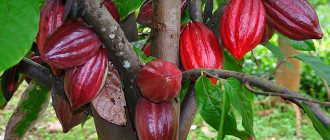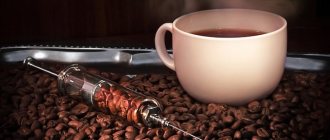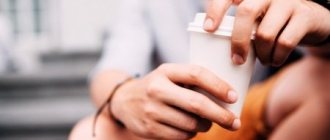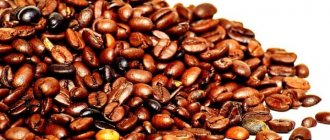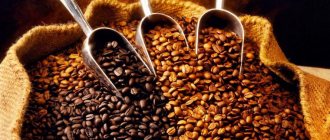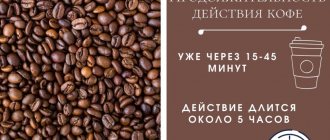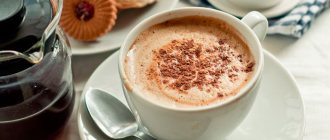Roast Methods and Caffeine: Dark vs. Light
Many coffee lovers and enthusiasts find that the amount of caffeine in their favorite mug depends on the type of roast they're brewing. It's true, but it's not as important as you think.
Dark roast
You might assume that darker roasts have more caffeine. And it makes sense on the surface.
We often say that dark roasts are "stronger" because of the bold flavor that darker roasts provide. They tend to be more intense, while lighter roasts tend to have floral or citrusy undertones. For many, this means “weaker” coffee.
These differences are purely a matter of taste. Dark roasts do not contain more caffeine than light roasts. If anything, there is less of it.
Light roast
How can a lighter roast contain more caffeine?
Coffee lovers with a little more knowledge about beans assume that the roasting process burns off some of the caffeine. Because dark blends are roasted longer, they claim, they lose more caffeine content.
That's almost right. Roasting itself actually removes very little caffeine because it is a very stable compound.
What happens instead is that the beans expand as they fry. Beans roasted for a longer time lose more water, becoming larger and less dense. So if you measure your coffee by volume, a lighter roast will contain more beans.
More beans mean more caffeine. The difference is minimal though. And if you measure your coffee by weight, there is no difference in the amount of caffeine in light and dark roasted coffee.
So when choosing your roasts, decide on flavor preferences rather than the amount of caffeine they may have. The difference is not enough to warrant change.
A few words about the research methodology
Choosing a coffee type
An important basis of the study was the choice of grain. We weren't trying to choose the most expensive or the most highly rated variety; Our task was to take the coffee that, firstly, meets our expectations from roasting, and, secondly, which is most often drunk in Australia.
Crema Coffee Garage's head roaster, Douglas Tew, selected Colombia Excelso washed from the Tolima region. The choice fell on this grain because it is quite uniform in size, shape and color. This results in a more predictable roasting result, which naturally translates into flavor and makes brewing results more repeatable and consistent.
Excelso is a quality assessment used primarily in Colombia. The grains of this variety are large, but slightly smaller than Supremo. The grain has a grade of 16 (grain diameter 0.64 mm). We roasted the coffee to 215°C, which is considered a medium roast, and let the beans rest for seven days before using them as a research sample.
Waiting seven days before brewing is our standard recommendation: during this period, carbon dioxide will definitely be released from the grain, which will have a beneficial effect on the development of taste and aroma in the cup.
The Colombian Excelso's average SCA score was 83.13.
Grinding process
The grind sizes for each brewing method were based on standard recipes that are widely used in the Australian market, both commercially and at home. We ground the study coffee in a DK-40 series coffee grinder using our standard grind settings—the same settings we use when grinding guest coffee in our coffee shops (see table below).
Grinding settings for tests
It is a well-known fact in the coffee community: ground coffee always contains a certain amount of both small and large particles of grain, which deviate in size from the selected degree of grinding. The quality of the coffee grinder can reduce these deviations to some extent, but they cannot be completely eliminated.
When approaching this part of the project, we wanted to achieve two goals:
- It is better to understand what the range of particle sizes (in microns) in the total mass of ground coffee is for each grinder setting selected.
- Ensure consistency and uniformity when brewing using each of the five methods.
And this is where KRUVE sieves came in very handy. KRUVE is a three-tier system with special metal meshes, each with a specific hole size (measured in microns).
It is noteworthy that these holes are round in shape, and not square, as in conventional sieves. These screens sort out the coffee particles, helping to achieve greater uniformity than even a very high-quality coffee grinder.
During the study, we used a complete set with sieve sizes ranging from 200 to 1100 microns. When we discovered that this set was not sufficient for screening particles for brewing in a French press, Mr. Adam Krupa, CEO of KRUVE, sent us a set of sieves in the 1200-1600 micron range; They have recently become available for purchase on their official website.
KRUVE sieves helped our research move away from the “extra salt” and “granulated sugar” system of measures common in the coffee world and achieve the greatest objectivity: only in this way could we be sure that by brewing coffee using each method, we would reduce grinding errors affecting extraction to zero (after all, the particles were sorted with micron accuracy).
Brewing methods
We've rounded up five of the most popular brewing methods among Australians, based on the best-selling drinks at Crema Coffee Garage.
Method for analyzing caffeine content
To analyze the caffeine content, we used high-performance liquid chromatography (HPLC), which allows for precise analysis of soluble compounds (in this case caffeine) in a liquid.
Research results
The following results were obtained by students of Chem 2201 (Medical and Analytical Chemistry), Newcastle University (Australia) in September-October 2022.
Sample analysis results
Coffee brewing method
If fried makes little difference, what about the cooking method? Does espresso have more caffeine than a mug of drip coffee?
The amount of caffeine extracted during brewing varies depending on the method. But again, it may not be what you think.
As a general rule, the longer the brewing method, the more caffeine you should expect per serving. The key here is that it is per serving.
According to Kicking Horse Coffee, one ounce shot of espresso contains about 40 milligrams of caffeine. A 340 gram drop has approximately 120 milligrams.
So, in comparison, espresso is much stronger (40 mg vs. 10 mg per 30 grams). But we don't typically consume 340 grams of espresso in one shot. This means that you will get more caffeine per shot in a drip cup than in a shot of espresso.
Cold brew coffee often contains more caffeine than drip coffee, in part because it is typically made with a higher coffee/water ratio. This may depend on how you brew and how much you dilute it, which can vary a lot from person to person.
When it comes to your brewing method, you should probably still make a decision based on your taste preferences. And remember, a double shot of espresso contains about the same amount of caffeine as an 8-ounce cup of coffee.
Custard natural
Brewing coffee is a special ritual that fills the morning with positive emotions and a delicious aroma. If you have a coffee machine, the time spent preparing the drink does not exceed that for brewing instant, and the production of serotonin, dopamine and norepinephrine helps in the fight against stress. If you grind your own coffee beans, you will be sure that the coffee will be free of impurities and additives, and the drink will be natural. By the way, it increases the activity of brain cells and prevents the development of Parkinson's disease, and also slows down the aging process.
Caffeine and Beans: Robusta vs Arabica
This is where the real difference lies. When deciding which beans to use, you have one big choice to make: Arabica or Robusta.
Robusta Beans
A typical Robusta bean has nearly twice the caffeine content of Arabica beans (and some have up to four times as much). Robusta is cheaper to grow and its higher caffeine content means it is more resistant to pests. Thus, you will usually find these beans in cheaper blends and instant coffee.
Don't expect great taste. Robusta has a milder and bitter taste. (Partly because the extra caffeine adds a bit of bitterness.)
Some espresso blends still contain small amounts of robusta, but otherwise you probably won't encounter this if you buy quality coffee.
Unless, of course, you're actively looking for high-caffeine coffee. So the gas station brew that promises a quick start in the morning is often made from robusta. That's why they are cheap and effective.
Arabica beans
Due to the low quality of Robusta coffee, most coffee shops and roasters stick to Arabica beans. It delivers more complex flavors and can provide better results for light, medium and dark roasted beans.
Much of this complexity comes from the low caffeine content. Arabica is not as bitter, containing about half the caffeine.
If you are strictly looking for the stimulating properties of coffee, then look for Robusta coffee. It has more of a punch, but you'll likely notice a difference in quality. And you may have to search a bit for a quality bag of beans, since most roasters stick to Arabica beans.
Pay attention when choosing, as you may find extremes on both ends.
For example, Death Wish Coffee is a blend of Arabica with a slight hint of Robusta. But it's made to contain caffeine, with the same peak per gram as your typical espresso. The company bills it as "The World's Strongest Coffee."
Espresso
This machine-brewed black coffee originates from Italy. To obtain it, hot water is passed through pressed ground grains. The drink forms a dense foam, which baristas call crema. For preparation, you should use freshly ground, heavily roasted beans, and it is advisable to mix Robusta with Arabica. You should add a little sugar to your espresso.
How about decaf coffee?
You might think this is pretty simple. Decaf coffee has no caffeine, right?
Almost.
Decaf coffee was treated before roasting, usually with water, carbon dioxide or solvents, to remove most of the caffeine. But it's not completely caffeine-free.
Typically about 97 percent of the caffeine is removed. For an eight-ounce cup, you can expect between five and ten milligrams, depending on the beans and the removal process.
It's not enough that you'll notice. But if you need to completely remove caffeine from your diet, you can't just switch to decaf. You'll have to give up coffee altogether (sorry).
Deception or magic wand?
3 in 1 coffee is very popular. But few people know what this ersatz instant dish is.
Manufacturers claim that the bags necessarily contain coffee beans (of low quality, and sometimes just substitutes such as chicory), as well as dry cream or milk and sugar. Given the short shelf life of dairy products, in the so-called 3-in-one coffee they are replaced:
- coconut or palm oil;
- glucose;
- acidity regulators;
- emulsifiers.
As a rule, there is an excess of granulated sugar in the mixture. This makes the drink overly sweet and helps make an inferior product more acceptable. And to say that coffee with milk is poured into a cup would be a big stretch, if not a complete deception. And even more so, no one can predict how long it will take for the negative impact of such a “treat” to appear.


